
Citroën's place in the history of the European car industry has always been marked by their dramatic rise to the peaks of success in Europe and across the World despite producing very few model designs. Their winning formula was that although not all of their designs were particularly pleasing to the eye, they were all extremely functional and well priced.
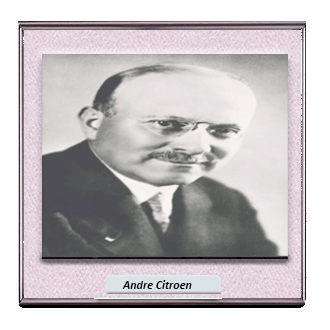 The driving force behind the Citroën success story was the company's founder, André Citroën, a gifted - engineer, industrialist and entrepreneur who founded his company, founder of Automobiles Citroën in 1918.
The driving force behind the Citroën success story was the company's founder, André Citroën, a gifted - engineer, industrialist and entrepreneur who founded his company, founder of Automobiles Citroën in 1918.
From the moment that the first Citroën rolled off the production line at the company’s plant in Javel, success followed success as Andre drove the company forward unrelentingly, his remarkable dynamism embracing every concept of Citroën management structure.
 Andre Citroën had ideas that were so far ahead of their time, including creating an exclusive dealer network that covered the whole of France, ensuring that Citroën road signs would be distributed extensively throughout the entire French road network.
Andre Citroën had ideas that were so far ahead of their time, including creating an exclusive dealer network that covered the whole of France, ensuring that Citroën road signs would be distributed extensively throughout the entire French road network.
At the same time, in the running of his massive Javel plant on the outskirts of Paris, Citroën showed that he was prepared to strive to achieve the highest levels of production standards.
![]()
Through learning and utilising many of the methods used by his counterparts in the huge car manufacturing plants of North America, in particular, those run by auto magnate Henry Ford Andre Citroën became recognised as the first real proponent of mass automobile production in Western Europe, with the methods he employed certainly proved to be successful for the company as well as creating a harmonious work environment.
By 1920 the 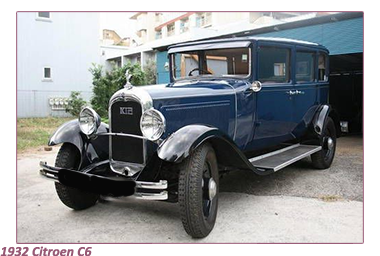 Citroën plant was turning out an average of 100 vehicles every day. Just ten years Citroen had grown to become the fourth largest car producer in the World, producing 100,000 vehicles annually.
Citroën plant was turning out an average of 100 vehicles every day. Just ten years Citroen had grown to become the fourth largest car producer in the World, producing 100,000 vehicles annually.
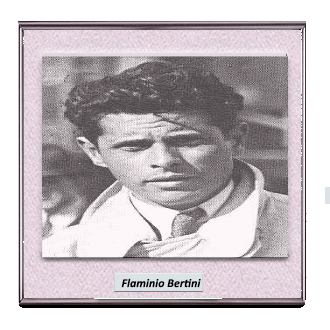 By the mid-Thirties the future only looked rosy for André Citroën and his shareholders. Always looking forward, Citroën decided that the time was ripe to instigate a major renovation to the company’s plant at Javel that had working flat out for close to two decades and was long overdue for a revamp.
By the mid-Thirties the future only looked rosy for André Citroën and his shareholders. Always looking forward, Citroën decided that the time was ripe to instigate a major renovation to the company’s plant at Javel that had working flat out for close to two decades and was long overdue for a revamp.
Citroën’s plans for after the factory would reopen to modernise his factory to launch a new model, which he was certain to would prove to be significant step forward for the company.
The new design was branded as the Traction Avant and was indeed well ahead of its time- the first monologue shelled front-wheel-drive car.
 Sadly, so engrossed was Citroën in the refurbishment of the Javel plant and the development of the Traction Avant, that he did not take the time to look up from his blueprints to realize that France, and indeed the entire Western World, was in the grip of a major economic downturn and political turmoil.
Sadly, so engrossed was Citroën in the refurbishment of the Javel plant and the development of the Traction Avant, that he did not take the time to look up from his blueprints to realize that France, and indeed the entire Western World, was in the grip of a major economic downturn and political turmoil.
Fully extended, Citroën soon found themselves in a precarious financial situation that threatened the company’s very existence.
![]()
Andre Citroën was held in the high regard in the European car industry at that time.
To give the company some breathing space, his major creditors agreed to a creditor's moratorium on the company’s debts. However, as often happens in such situations, a minor creditor did not to agree, meaning that the moratorium could not take effect.
In just a few short months, Automobiles Citroën was rendered insolvent and were rapidly acquired by the Michelin Tire company, their largest creditor.
Tragically A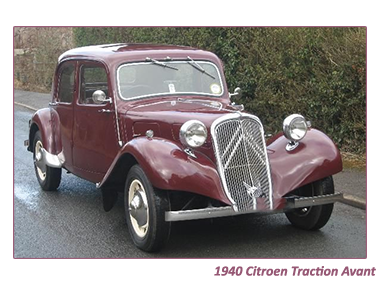 ndré Citroën, so confident was he that demand for the Traction Avant would lead his company to the financial safety, had already pledged his personal shareholding to his bank to buy some time, ended up a broken man financially and morally.
ndré Citroën, so confident was he that demand for the Traction Avant would lead his company to the financial safety, had already pledged his personal shareholding to his bank to buy some time, ended up a broken man financially and morally.
 In 1938 André Citroën was rapidly replaced as the Chairman of the Company he had founded. Citroen passed away the following year, aged just 56, leaving his wife and children dependent on the charity of others, which, thankfully, they rapidly received.
In 1938 André Citroën was rapidly replaced as the Chairman of the Company he had founded. Citroen passed away the following year, aged just 56, leaving his wife and children dependent on the charity of others, which, thankfully, they rapidly received.
When the Second World War broke out in 1939, the French car producers were in an unusual situation, in that while their domestic market had been put on hold, they were still allowed to operate research and development facilities in their plant.
Citroën took advantage of this opportunity to the full, developing one or two very utilitarian prototypes, one of which evolved to become the 2CV, among the best-selling “ peoples cars” of post-war Europe.
In the aftermath of World War 2, new cars were few and far between on the roads of Europe and furthermore, while, due to a shortage of foreign exchange, importing cars was far from being a viable proposition.
![]()

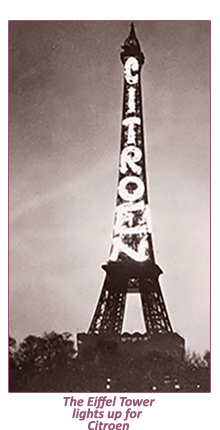 Citroën found themselves in position to take advantage of this shortage as they rapidly began to turn out versions of the Traction Avant, made up from parts which they had stockpiled before the war.
Citroën found themselves in position to take advantage of this shortage as they rapidly began to turn out versions of the Traction Avant, made up from parts which they had stockpiled before the war.
Another advantage was that the Javel plant had remained largely intact meaning that production could begin immediately. The only way to distinguish between the pre-war and post-war Traction Avant models were Nacelles embedded in the car’s bonnet in place of air inlet flaps.
 Sales of the Traction Avant kept Citroën afloat in the challenging years after World War Two providing the company with valuable time before the launch of the eagerly awaited 2CV.
Sales of the Traction Avant kept Citroën afloat in the challenging years after World War Two providing the company with valuable time before the launch of the eagerly awaited 2CV.
This revolutionary car was designed by the multi-talented Flaminio Bertoni, an Italian designer, who honed his talents as a painter and sculptor, who was a joint founder of Citroën’s design studio in Paris.
When the launch eventually did come in October of 1948 at the Paris motor show, the 2CV emerged for under the covers like an ugly baby who had just fought its way through a difficult birth.
Ugly as the car was, it was an immediate commercial success from day one. Such was the demand for the “ ugly duckling” that at one time Citroën were unbelievably sitting on a two-year waiting list.
The French and indeed the rest of Europe and the developing World loved the “ Deux Chevaux” an uncompromising workhorse that could provide a comfortable ride in the most testing surfaces.
During its close to forty-year production run, around four million Citroën 2CVs were produced, with at least the same number assembled under license across the Globe.![]()
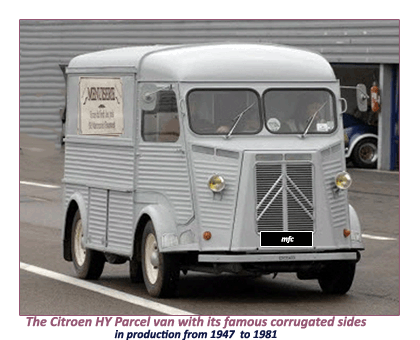 A sign of the 2CV’s longevity is that for more than twenty years after the last model rolled off the production line, it was still possible to see many hundreds of 2CVs at work and play on the French roads.
A sign of the 2CV’s longevity is that for more than twenty years after the last model rolled off the production line, it was still possible to see many hundreds of 2CVs at work and play on the French roads.
 Up until 1955, the Javel plant was fully occupied churning out 2CVs, with the only other model in production the Traction Avant, which still had its loyal followers.
Up until 1955, the Javel plant was fully occupied churning out 2CVs, with the only other model in production the Traction Avant, which still had its loyal followers.
That was the year that the Citroën management almost regrettably decided that it was time to put the Traction Avant into retirement. Its replacement, the DS was an almost complete opposite of the 2CV, a beautifully designed and constructed sedan, utilising Citroën’s recently developed hydro-pneumatic self-levelling suspension system first fitted on the Traction Avant the previous year.
When first revealed to the motoring public at the Paris Motor Show of 1955, the Citroën DS created a true sensation, an irresistible blend of imaginative design and innovative engineering employing the newest materials on the market.
 The French didn’t expect their cars to look so good, especially their Citroën’s, meaning they were entirely bowled over by the DS.
The French didn’t expect their cars to look so good, especially their Citroën’s, meaning they were entirely bowled over by the DS.
From day one and onwards through its almost twenty-year production run the Citroën sold more than 1.5 million versions of the DS, a remarkable figure for a car in the sedan category.
The unrelenting demand for the 2CV meant that Citroën had recovered their market standing and were once again among the leaders among Europe’s car manufacturers.

